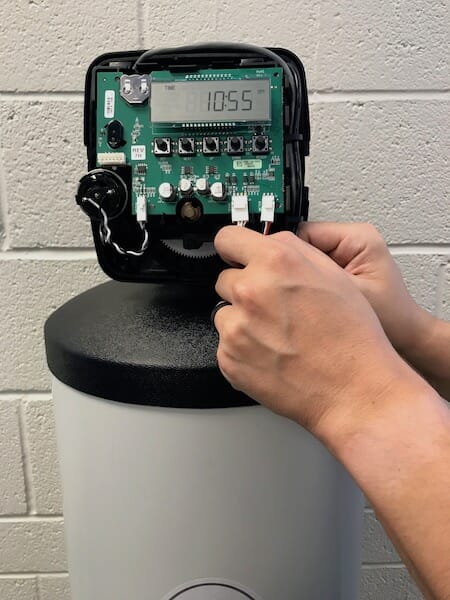
Is your water softener not working as expected? Water softeners play a crucial role in maintaining the quality of water in your home, especially in areas with hard water. These systems help prevent scale buildup in your plumbing, protect your appliances, and provide cleaner, softer water for everyday use. But like any home appliance, water softeners can encounter issues that disrupt their performance. Whether it’s a problem with salt bridging, regeneration cycles, or mineral buildup, understanding how to troubleshoot common water softener problems is essential. In this guide, we’ll explore the most frequent issues, how to fix them, and when it’s time to call a professional for water softener repair.
What Causes Water Softener Issues?
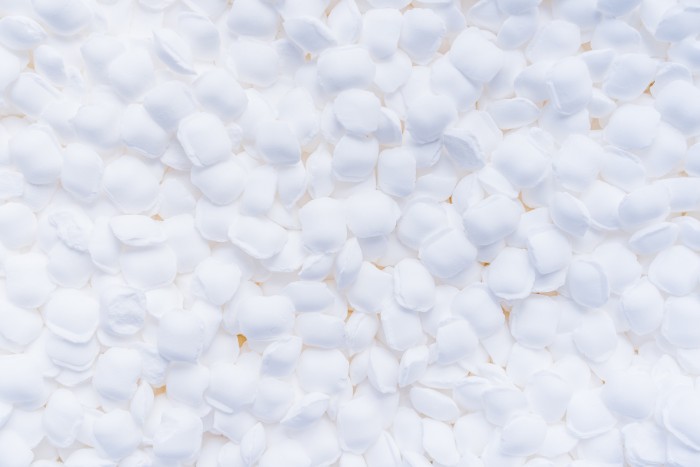
Water softener problems can arise from several factors, including improper maintenance, hard water mineral buildup, or mechanical failures. Some of the most common causes include:
- Salt Quality: Low-quality salt can lead to clogs or salt bridging in the brine tank. We recommend using salt crystals in the units.
- Water Usage Changes: Increased or decreased water consumption may require adjustments to the softener’s settings.
- Age of the System: Over time, components like resin beads or control valves can wear out and require replacement.
- Improper Installation: A poorly installed water softener may lead to leaks, inefficiency, or other operational issues.
Understanding these causes can help you take preventative measures to avoid disruptions in your water softener’s performance.
Common Water Softener Problems
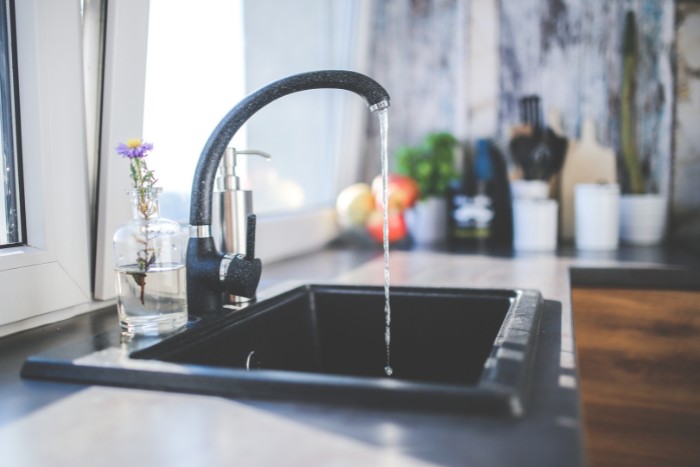
If your water softener isn’t performing optimally, identifying the issue is the first step toward a solution. Below are some of the most common water softener problems homeowners encounter:
- Salt Bridging
This occurs when salt in the brine tank forms a hard crust or “bridge,” preventing the system from using the salt effectively. As a result, your water softener may stop softening water properly. To avoid this problem, don’t fill your brine tank beyond the half way point. - Resin Bead Deterioration
The resin beads in your water softener are responsible for trapping hard water minerals. Over time, these beads can become fouled or lose their effectiveness. - Low Water Pressure
Mineral deposits or clogs within the softener can restrict water flow, causing a noticeable drop in water pressure. - Motor Issues
Like any appliance with a motor, your water softener’s motor may fail and disrupt the system’s operation. The motor automatically rotates the valve between modes like softening and regeneration. If the motor fails, the system may stop functioning entirely. - Frequent or Continuous Regeneration Cycles
If your system is regenerating too often or continuously, it may be due to a malfunctioning control valve or incorrect timer settings. - Brine Tank Overflow
The brine tank is vital for proper water softener function. Overflow issues can occur due to brine line blockages, stuck float valves, or clogged injectors, causing improper water levels and affecting the system’s performance. - Water Softener Not Using Salt
Sometimes, the system fails to use the salt in the brine tank, often because of a blocked brine line, a faulty injector, or a stuck float valve. - Error Codes or Digital Malfunctions
Many modern water softeners display error codes to indicate specific problems. While helpful, these codes often require troubleshooting or professional interpretation.
Water Softener Troubleshooting: How to Fix Common Issues
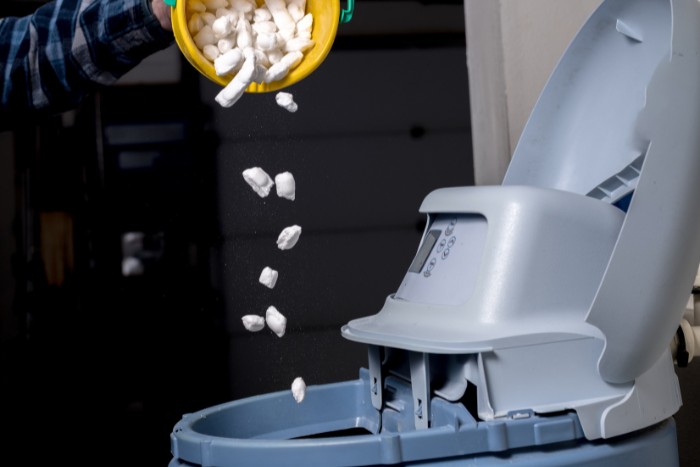
1. Salt Bridging
To resolve salt bridging:
- Turn off your water softener.
- Break up the hardened salt crust using a broom handle or similar tool.
- Remove any large chunks and refill the tank with fresh, high-quality salt.
- Restart the system and monitor its performance.
2. Resin Bead Issues
If resin beads are fouled or damaged:
- Clean the resin tank using a cleaner formulated for water softeners.
- Replace the resin beads if they are worn out or more than 10–15 years old.
3. Low Water Pressure
To fix low water pressure:
- Ensure the bypass valve is fully open.
- Flush the resin tank to remove mineral buildup.
- Clean or replace the pre-filter if your system includes one.
4. Motor Issues
If your water softener’s motor stops working, here’s how to address it:
- Inspect all cables and settings to ensure there are no unrelated problems.
- If you suspect the motor has failed, contact a professional plumber for diagnosis and replacement.
- Check your warranty to see if the motor replacement can be covered at no cost.
5. Frequent or Continuous Regeneration Cycles
To stop excessive regeneration:
- Check and reset the timer settings according to the manufacturer’s instructions.
- Inspect the control valve for damage or wear.
- Ensure the softener is properly calibrated for your household’s water usage.
6. Brine Tank Overflow
To troubleshoot brine tank overflow issues:
- Check the brine line for blockages and ensure it’s securely attached to the float inside the brine well.
- Inspect the float valve for salt buildup or debris and clean it thoroughly.
- Verify that the brine tank caps are tightly fitted.
- Look for clogs in the drain line or injector and clean them as needed.
- If the injector is severely clogged, consult a professional to clean or replace it.
7. Water Softener Not Using Salt
When the softener isn’t using salt:
- Inspect the brine line for blockages or kinks.
- Clean the injector and screen to remove debris.
- Ensure the float valve in the brine tank is functioning correctly.
8. Error Codes
When error codes appear:
- Consult the user manual to identify the problem.
- Reset the system to see if the error clears.
- Contact a professional if the issue persists or is unclear.
Preventative Maintenance for Water Softeners

Regular maintenance can significantly reduce the likelihood of problems. Follow these tips to keep your system in good shape:
- Use High-Quality Salt: Avoid clogs and salt bridges by using salt specifically designed for water softeners.
- Clean the Brine Tank: Periodically clean the brine tank to remove buildup and debris.
- Inspect Components: Regularly check the resin beads, brine line, and control valve for wear or blockages.
- Monitor Water Usage: Adjust settings as needed to match changes in your household’s water consumption.
- Schedule Annual Inspections: A professional tune-up can identify potential issues before they become major problems.
When to Call a Professional for Water Softener Repair
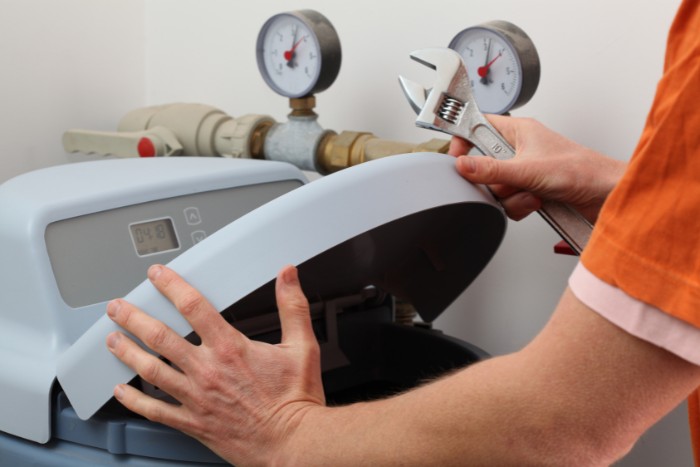
While many water softener problems can be resolved with basic troubleshooting, some situations require professional expertise. Contact a professional if:
- Troubleshooting doesn’t fix the issue.
- Your system displays persistent error codes.
- The softener fails to regenerate or soften water despite your efforts.
- Components like the control valve or resin beads need replacement.
- Your system is over 10 years old and experiencing frequent issues.
Choosing the Right Water Softener Repair Service
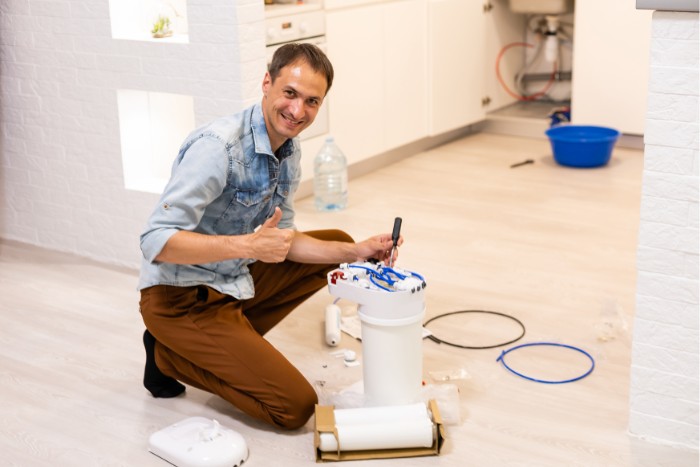
When selecting a repair service, look for professionals with:
- Experience: Choose a company with expertise in diagnosing and repairing water softener systems.
- Reputation: Check reviews and testimonials from previous customers.
- Comprehensive Services: Opt for a service provider who can handle everything from minor repairs to full system replacements.
Keep Your Water Softener Running Smoothly

Water softeners are invaluable for homes dealing with hard water, but they require proper care and maintenance to function effectively. By understanding common water softener problems and learning how to troubleshoot them, you can keep your system running smoothly and enjoy the benefits of soft water in your home.

If troubleshooting doesn’t resolve your issue, don’t hesitate to contact the professionals at Clear Water Concepts. Our experts can diagnose and repair water softener problems quickly and effectively, ensuring your home’s water quality remains top-notch. Schedule a consultation today and take the first step toward a fully functional water softener system.


